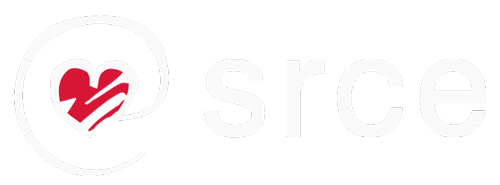- Hrvatski
Course content
Geodetic Astronomy
- Code:
- 143238
- Abbreviation:
- B36B04
- Higher education institution:
- Faculty of Geodesy
- ECTS credits:
- 5.0
- Load:
- 30(L) + 30(E)
- Issuing teachers:
-
Professor Dragan Špoljarić, PhD
- Course contractors:
-
Professor Dragan Špoljarić, PhD (L, E)
Zvonimir Nevistić, PhD (E)
- Course description:
- <br> The acquisition of basic theoretical knowledge in spherical and geodetic astronomy required for understanding and mastering the practical astrogeodetic tasks in engineering geodetic practice. Understand the theoretical assumptions necessary for mastering of the other courses in which students require such specific knowledge. <br> <strong>Learning outcomes at the level of the programme to which the course contributes</strong> <ul><li>Understand the role of geodesy, geoinformatics and spatial data in modern world, demonstrate competences in measuring systems, methods and technologies of measurement and spatial data collection. <li>Handle geodetic instruments and appropriate measuring equipment properly, and perform geodetic measurements. <li>Exercise appropriate judgements on the basis of performed calculation processing and interpretation of data obtained by means of surveying and its results. <li>Keep pace with and adopt new technological achievements in the field of surveying, geoinformation systems and services based on the position, and the changes in regulations, norms and standards.</ul> <strong>Learning outcomes expected at the level of the course</strong> <ul><li>Differentiate and define the celestial coordinate systems and phenomena that change the coordinates of celestial bodies, describe celestial coordinate reference systems and frames. <li>Compare and recalculate the coordinates in different celestial coordinate systems. <li>Differentiate and define time systems and scales, calendars, epochs and dates and describe modern measuring time (quartz and atomic clocks). <li>Compare and recalculate the basic timescales. <li>Differentiate and describe the procedures (methods) for determining the astronomical coordinates of the station and astronomical azimuth. <li>Apply determining the astronomical coordinates and azimuth in specific tasks of surveying engineering profession and analyze topical measurements</ul> <strong>Course content broken down in detail by weekly class schedule (syllabus)</strong><br> Lectures: <ol><li>Content and organization of the course. The importance and application of astronomy. Subject and division. <li>Object in the celestial sphere, their magnitude and real and apparent motion. <li>Celestial sphere. Celestial coordinate systems. Mean and apparent places. <li>Phenomena that change the coordinates of celestial bodies: refraction, aberration and parallax. <li>Phenomena that change the coordinates of celestial bodies: the precession and nutation. <li>Motion of the Earth's poles and non-uniformity of the Earth's rotation. <li>Time. Historical review of the measuring of time (processes or devices). Calendars. Epochs and dates. Julian Date (JD, MJD). <li>Time systems and scales (apparent and time solar and sidereal time). <li>Time systems and scales (UT0, UT1, ET, TDT, TT, BDT, TCG, TCB, UTC, TAI, GPST, GLONASST). <li>Modern devices for measurnig of time, synchronization and time distribution. <li>Methods of determining the astronomical azimuth (direct method). <li>Methods of determining the astronomical azimuth (indirect methods: hour angle and zenith distance). <li>Individual and simultaneous determination methods of astronomic latitude and longitude (Horebow-Talcott method, a meridian passing star, method of equal height). <li>Automation, testing and application of determining the astronomical azimuth in engineering surveying profession. <li>Celestial reference systems and frames (the basics).</ol> Exercises: <ol><li>Introducing students to the project, the embodiment, terms and conditions handing over the project. <li>Computer animation celestial sphere, the stars and constellations. <li>Computer animation astronomical phenomena, apparent and true movement of the celestial bodies. <li>Visit Planetarium at the Tehnical Museum. <li>Online recalculate the coordinates between the celestial coordinate systems. Visualization of the celestial sphere and the calculated positions of the heavenly bodies. <li>The first project task: Conversion time scales. <li>The design of the project task (exercise repetitions). <li>The first partial exam. <li>The second project task: Determination of astronomical azimuth with Polar star observation. <li>The design of the project task (exercise repetitions). <li>Determination of astronomical azimuth with the Sun observation (practical exercises). <li>Simultaneous determination methods of astronomic latitude and longitude (practical exercises). <li>The second partial exam. <li>The partial exam repetitions. <li>The visit to the Astronomical Observatory Zagreb with thematic lecture and observation of the night sky.</ol> <strong>Screening student work</strong> <ul><li>Class attendance - 1.5 ECTS <li>Tests - 1.0 <li>Oral exam - 1.5 ECTS <li>Written exam - 1.0</ul>
- Mandatory literature:
-
1. Špoljarić D.: Materijali s predavanja i vježbi (e-učenje)
2. Terzić P.: Sferna astronomija, Geodetski fakultet Sveučilišta u Zagrebu, 1990.
3. Terzić P.: Geodetska astronomija II, Sveučilište u Zagrebu Geodetski fakultet, Zagreb 1988.
4. Roša, D. (2011): Elementarna astronomija I dio. Zvjezdarnica Zagreb, Zagrebački astronomski savez, Zagreb.
5. Roša, D. (2014): Elementarna astronomija II dio. Zvjezdarnica Zagreb, Zagrebački astronomski savez, Zagreb.
- Recommended literature:
-
6. Schödlbauer, A. (2000): Geodätische Astronomie, Grundlagen und Konzepte. Walter de Gruyter, Berlin, New York.
7. Mueller, I., Eichhorn, H. (1968): Spherical and practical astronomy as applied to geodesy. Frederick Ungar Publishing Co., New York.
- Course in study programme:
-
Code Name of study Level of study Semester Required/Elective 71 Geodesy and Geoinformatics undergraduate 6 elective * the course is not taught in that semester
Legend
- E - Exercises
- L - Lectures

